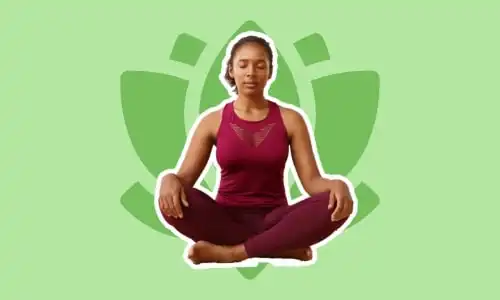
Are mindfulness and meditation the same thing?
We live in a fast-paced, even frenetic, world of increasing pressures and high demands. The incessant thoughts and emotions that accompany this way of living can drain a lot of energy. This is leading to a sense of overwhelm, mental health issues and even physical illness. This is thought to be one of the reasons that millions of people are flocking to mindfulness and meditation at this time from all walks of life.
Let’s explore the differences between mindfulness and meditation by looking at:
What is mindfulness?
At present, there is no universally accepted definition for “mindfulness.” It seems to be difficult to define due to differing beliefs of what exactly mindfulness is, differing opinions on how to achieve mindfulness, varied views about the purpose of mindfulness, and the challenge of describing the concept using medical and psychological terminology.’ In its simplest terms, it is the practice of NOT DOING or just BEING.
Mindfulness teaches us how to deal with life’s challenges in a calmer manner. It is not the answer to all of life’s problems but rather it allows us to see our problems more clearly, be in touch with our body and be able to respond in a discerning way rather than reacting with high emotion and stress. It is a particular way of paying attention and looking deeply into oneself. It teaches us how to let go of thoughts and emotions that don’t serve us.
Mindfulness is a life-enhancing practice that enables us to expand our conscious awareness and general presence. Mindful awareness allows us to become more sensitive to what is occurring in the present moment, both within ourselves and in the outside world. We learn to slow down, nurture calmness, and work on self-acceptance simply by observing what our minds are up to from moment to moment, letting go of thoughts before we get caught up in them, and noticing what happens in our bodies.
Mindfulness gives us the capacity to wake up, to reconnect with our deepest and truest selves.
Growing research shows us that engaging in a mindful practice regularly and consistently brings about innumerable positive changes and benefits. We are starting to understand more and more the effect it has; including measurable changes in the brain; improved cognitive function like our ability to focus, pay attention and rely on our memory; and the vast impacts on stress resilience and immunity.
What is meditation?
Most people understand meditation to be some form of controlling the mind, usually through concentration, to get some silence or relaxation. Concentration, however, tends to take a lot of disciplined training and is usually not all that enjoyable. It feels unnatural for the mind to be controlled. Meditation techniques can include something as simple as focusing on a flower to involve training the mind and heart to be receptive to the present moment so that our awareness can expand.
The primary goal of meditation is to inspire the superfecta of peacefulness: spiritual connectedness, mental clarity, emotional tranquillity, and physical relaxation.
It is an ancient practice that helps people go beyond their personalities and deeper within themselves so that they can experience a more profound and connected sense of their true self and their realities.
It can occur in any location, and at any time, although early mornings offer the most meditative atmospheres. During early mornings, our bodies are in restful states of self-nurturance. This is also when all the usual societal energies are dormant.
What is the difference between mindfulness and meditation?
The jury is still out on that one. It seems to be that this is interpreted differently across the world and between people… so you can decide for yourself.
It might be said that mindfulness is a form of meditation, but the practice of mindfulness might not always be meditative. You might be present in this moment in all its glory, but you might not achieve a meditative state or move beyond the mind.
The practice of meditating supports being mindful. If you want to bring more mindfulness into your life, then introducing a regular meditation practice into your life is a great way to do just that.
Meditation is the training ground for learning mindfulness. At first, we meditate to become familiar with the here and now for a limited period. Over time, however, regularly practising mindfulness helps us develop the ability to be present throughout the day, every day. We train in moment-to-moment awareness through meditation, allowing us to build the skill of mindfulness so that we can then apply it to everyday life. In teaching the mind to be present, we are teaching ourselves to live more mindfully which is particularly helpful when faced with challenging circumstances or difficult situations.
As meditation is a form of mental training it requires consistent practice. It’s not about simply following a set of instructions or a particular method but being open to an entirely new way of learning, one that is very seldom taught these days, especially in western culture. The attitude with which you undertake your practice is incredibly crucial.
The core components of mindfulness
It seems to be universally agreed that there are two core elements to mindfulness practice:
1. Being present in the moment:
While ‘being present’ sounds easy, it is a far more complex idea than we first think, and we need to continuously hone our skills to avoid falling into the trap of our busy minds. Being present means feeling whatever you’re feeling, noticing your body’s reactions and being where you are, when you’re there.
2. Non-judgmental acceptance of your experience:
Being able to accept our experience just as it is means we don’t attach any particular meaning to the experience, and we are therefore less disturbed or disrupted by it. We are then able to be less reactive and more observant. We strive to maintain an open and curious attitude, not entering the practice with suspicion or self-criticism.
So essentially, let go of any preconceived ideas or desires during your practice and simply allow this moment and where you’re at to be enough. There is no need to feel agitated that our minds are still judging because they are. And feeling impatient about it does not change that.
The deeper truth is there is no better than Here Right Now.
Conclusion
Cultivating the attitude by being aware of our thoughts and being open to exploring our minds is key to building a strong base for mindful practices like meditation. It is a way to train our minds in becoming habituated to being present, calm, open and curious. The knock-on is greater grounding, inner peace, inner connection, and vitality.
Learn to better manage the daily stresses of life and improve your overall health with our Mindfulness Practice Course.


